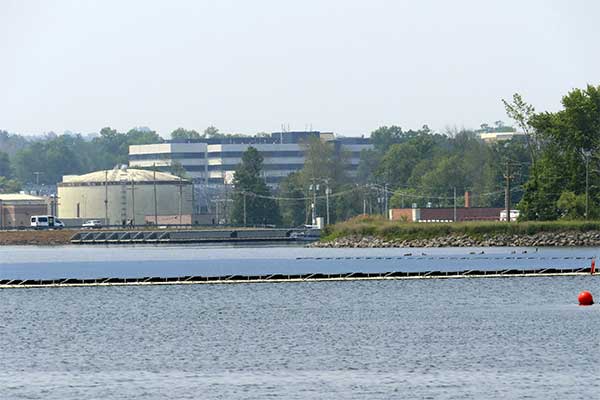The Canoe Brook Water Treatment plant in New Jersey is a major producer of drinking water, generating a daily output of 14 million gallons.
With each gallon weighing approximately 8 pounds, it is evident that a significant amount of energy is required to transport water from the reservoir to the treatment plant and subsequently distribute it to the 84,000 households and businesses served by the New Jersey American Water Company in the region.
To address this energy demand, the water utility collaborated with NJR Clean Energy Ventures, the renewable energy subsidiary of New Jersey Resources, a natural gas firm. NJR Clean Energy Ventures undertook the construction of an extensive array of solar panels, which were interconnected and placed on the surface of Canoe Brook Reservoir.
This impressive solar array covers 17 acres and comprises 16,510 solar panels, making it the largest floating solar array in North America.
It is twice the size of the next-largest facility located in Sayreville, New Jersey, owned by the municipality. Operational since January, the Millburn facility generates 8.9 megawatts of electricity, sufficient to power 1,400 homes.
However, instead of supplying residential customers, the generated power fulfills 95% of the water treatment plant’s substantial energy requirements. Mark McDonough, president of New Jersey American Water, emphasized the energy-intensive nature of pumping water and expressed the utility’s commitment to embracing cleaner, greener, and more efficient energy sources.
While floating solar arrays have long been popular in Asia, they are gaining traction in the United States.
A study published in the journal Nature Sustainability in March revealed that thousands of cities worldwide, including over 6,000 in 124 countries, could potentially generate electricity equivalent to their entire demand through floating solar arrays. This highlights the significant role this technology can play in combating climate change.
The financial details of the New Jersey solar facility were not disclosed by either company. However, Robert Pohlman, vice president of NJR Clean Energy Ventures, emphasized the project’s soundness for both organizations.
The Sayreville solar array, approximately half the size of the Millburn facility, cost $7.2 million to construct, as reported by RETTEW, the Pennsylvania-based company responsible for its development.
Shawn LaTourette, New Jersey’s environmental protection commissioner, acknowledged the positive impact of the project in reducing the energy consumption of water systems.
Floating solar arrays are typically deployed on man-made freshwater bodies like reservoirs or holding basins for water treatment plants to prevent corrosion caused by saltwater exposure. By placing solar panels on plastic floats anchored to the reservoir’s bottom, water evaporation is minimized, and the temperature of the water aids in cooling the panels, thus enhancing their efficiency, according to officials.










Comments